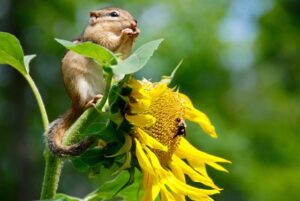 Greetings, subscribers. Today, we learn about International Biodiversity Day in the following article about Earth Care by my friend, the naturalist and author, Peg Sias Lantz. Enjoy!
Greetings, subscribers. Today, we learn about International Biodiversity Day in the following article about Earth Care by my friend, the naturalist and author, Peg Sias Lantz. Enjoy!
Note: In case you missed the first three blog posts on Caring for Mother Nature, here are the links:
Caring for Mother Nature | Charlene L. Edge (charleneedge.com)
#2 Caring for Mother Nature: TREES | Charlene L. Edge (charleneedge.com)
#3 Caring for Mother Nature: PINE TREES | Charlene L. Edge (charleneedge.com)
International Biodiversity Day
by Peg Lantz
Did you know that Monday, May 22, 2023 was International Biodiversity Day? International. Wow! Biodiversity must be important.
Do you know what biodiversity is? It’s the total of all the billions – trillions? mega trillions? — of different kinds of living things on Earth. All the birds, mammals, plants, trees, butterflies, frogs, insects — yes, and snakes and nasty bugs and mosquitoes and bacteria and weeds.
And humans. Sigh.
How to show we care about biodiversity
The World Wildlife Fund Living Planet Report for 2022 says that since 1970 the populations of mammals, birds, fish, and reptiles in the world have declined by 69 percent.
The population of humans in that same time has more than doubled from 3.7 billion to 8 billion.
Do we care? Do Christians care? This Christian does!
So what can we do?
Douglas Tallamy cares, too. He is an American entomologist, ecologist, and conservationist and a professor in the Department of Entomology and Wildlife Ecology at the University of Delaware. (An entomologist studies insects.) And he is suggesting that every yard in the world could be a wildlife sanctuary. All we have to do is plant species of plants that naturally live in your yard. Not plants from another country. Not even plants that grew where you came from, but plants that used to live where your house is.
Plants keep the cycle of life going
Plants are the only living things that do not “eat” something else. They live only on water and sunshine. But insects eat plants. You like butterflies? To have a butterfly you have to have a caterpillar. Caterpillars eat your plants.
Birds feed their baby birds caterpillars – soft-bodied and delicious. Even if, as an adult, they live on seeds, the babies need bug protein to thrive. And they need it every 20 minutes!
You think maybe you’d like butterflies and birds in your yard? Plant plants that caterpillars like to eat. They don’t eat lots of grass. And you mustn’t spray them with insecticides because they chew on leaves and make your pretty plants look ugly. Because if you do, you won’t have butterflies. Or baby birds. So, what can we do?
Aim for biodiversity in your own yard
Doug Tallamy has written several books to help you understand these concepts: Bringing Nature Home, Nature’s Best Hope (for young people), The Living Landscape, The Nature of Oaks. His latest project is to get everyone to turn their yard into a national park. I’d prefer to call every yard a wildlife sanctuary. www.homegrownnationalpark.org.
To know what would be helpful in your yard to increase the biodiversity there, join the Florida Native Plant Society. There’s a chapter near you that meets every month to help you learn about native plants. www.fnps.org.
—END—
Thanks for reading!
Next time: The Story Behind Undertow.
Your writer on the wing,
Charlene





